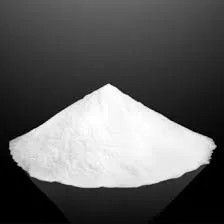
nov . 06, 2024 02:01 Back to list
what is hydroxypropyl methyl cellulose
Understanding Hydroxypropyl Methyl Cellulose An Overview
Hydroxypropyl Methyl Cellulose (HPMC) is a widely used synthetic polymer derived from cellulose, a natural biopolymer found in the cell walls of plants. This compound is formed through the chemical modification of cellulose, wherein hydroxypropyl and methyl groups are introduced to the cellulose chains. HPMC is characterized by its ability to form gels, thickening agents, and film-forming properties, making it a versatile ingredient in various industries.
Key Properties of HPMC
One of the most notable features of hydroxypropyl methyl cellulose is its exceptional solubility in water. HPMC forms a transparent solution upon dissolution, which makes it an attractive choice for applications that require clarity, such as in pharmaceuticals and cosmetics. Additionally, it exhibits thermal stability, meaning it retains its properties even when exposed to heat, which is beneficial in cooking and baking applications.
The viscosity of HPMC solutions can be adjusted by altering the concentration of HPMC and the degree of substitution of the hydroxypropyl and methyl groups. This adaptability allows manufacturers to formulate products with specific textural properties, enhancing the user's experience.
Applications of Hydroxypropyl Methyl Cellulose
HPMC has a broad range of applications across different fields
1. Pharmaceutical Industry In pharmaceuticals, HPMC is commonly employed as a binder and stabilizer in tablet formulations. It helps to improve the release profile of active ingredients, making it essential for controlled-release drugs. Additionally, it is used in eye drop formulations as a lubricant due to its moisture-retaining properties.
what is hydroxypropyl methyl cellulose

2. Food Industry In food production, hydroxypropyl methyl cellulose serves as a thickening agent, emulsifier, and texturizer. It is often used in gluten-free baking, providing structure and moisture to products that would otherwise be dry and crumbly. Its ability to form a gel when heated is also utilized in sauces and dressings.
3. Cosmetic and Personal Care Products HPMC is a popular ingredient in cosmetic formulations, including lotions, creams, and gels. It enhances the texture and stability of products, ensuring a pleasant application experience for the user. Due to its ability to retain moisture, it is often included in moisturizing products as well.
4. Construction Industry In the construction sector, HPMC is used in cement and gypsum-based products. It improves workability and adhesion, allowing for easier application and longer open times for workers.
5. Agriculture HPMC is also used in agriculture as a coating agent in fertilizers and pesticides, allowing for controlled release and improved efficiency.
Safety and Regulation
HPMC is generally recognized as safe (GRAS) by regulatory agencies, including the U.S. Food and Drug Administration (FDA), when used in appropriate amounts. Its non-toxic and biodegradable nature further enhances its appeal in various applications.
Conclusion
Hydroxypropyl methyl cellulose is a multifaceted polymer with applications spanning numerous industries, including pharmaceuticals, food, cosmetics, construction, and agriculture. Its unique properties such as solubility, viscosity control, and film-forming capabilities make it an invaluable ingredient in product formulation. As industries continue to innovate, HPMC will likely find new applications, further demonstrating its versatility and importance in everyday products. Understanding its properties and uses can help consumers and manufacturers alike appreciate this remarkable substance and its contributions to modern life.
-
Versatile Hpmc Uses in Different Industries
NewsJun.19,2025
-
Redispersible Powder's Role in Enhancing Durability of Construction Products
NewsJun.19,2025
-
Hydroxyethyl Cellulose Applications Driving Green Industrial Processes
NewsJun.19,2025
-
Exploring Different Redispersible Polymer Powder
NewsJun.19,2025
-
Choosing the Right Mortar Bonding Agent
NewsJun.19,2025
-
Applications and Significance of China Hpmc in Modern Industries
NewsJun.19,2025







